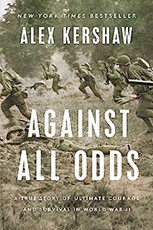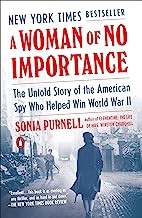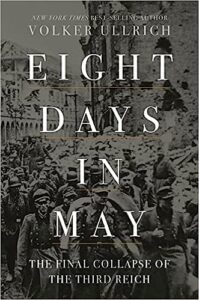GERMANS CRUSH DUTCH DEFENSES
Rotterdam, The Netherlands • May 14, 1940
On this date in 1940 in Holland, the German Luftwaffe bombed Rotterdam’s medieval city center, killing nearly 1,000 people and leaving 85,000 homeless. Rather than endure more ferocious bombings—leaflets dropped on Utrecht indicated it was next Dutch city in German crosshairs—the Dutch Army surrendered the next day. The German offensive against the Low Countries had been launched four days earlier, on May 10, without a declaration of war beforehand, when German airborne/airlanding assault divisions and ground forces began seizing strategic locations in Holland and Belgium.
The surprise assault on the Low Countries was part of Fall Gelb (Case Yellow), a German offensive plan that included attacking France, which, like Great Britain, had been at war with Germany since September 3, 1939, two days after Adolf Hitler had unleashed the Wehrmacht (German armed forces) on his eastern neighbor, Poland. Fighting continued along the Dutch-Belgian border, where several Dutch battalions, aided by French units, put up a limited defense.
It was in Belgium, in principle neutral, that France moved to halt the German advance, believing (falsely) its northern neighbor to be the Wehrmacht’s main thrust in the West. After the French had fully committed the best of their armies in defense of Belgium between May 10 and 12, the Germans enacted the second phase of Fall Gelb, a sickle cut through the heavily forested and rough terrain of the Ardennes in Southern Belgium and Luxembourg, devoid of Allied forces, and advanced toward the northern French coast. (The term “sickle cut” was first used by British Prime Minister Winston Churchill to describe the encirclement of Allied troops in France’s northernmost region, Nord-Pas-de-Calais-Picardy, and separating them from units to the south.)
The Germans with their superior mechanized Panzer divisions, supported by Luftwaffe dive bombers, reached the English Channel after five days. Their sickle cut entrapped the French, Belgian, and British armies between a rock (the Wehrmacht) and a watery grave. (A British Expeditionary Force had been deployed mainly along the Franco-Belgian border since September 1939.) The Germans gradually shrank the Allied pocket to the resort beaches and harbor at Dunkirk. Belgium’s new young king, Leopold, and the Belgian armed forces, which had just 10 modern tanks and 180 serviceable aircraft, capitulated to superior German forces on May 28, 1940. The Germans would have totally annihilated the British and French armies had it not been for the extraordinary impromptu seaborne evacuation of over 338,000 Allied troops from Dunkirk between May 27 and the morning of June 4, 1940, and the ferocity and tenacity of the Royal Air Force’s Fighter Command over Dunkirk’s harbor and beaches, where British Spitfires and Hurricanes fought the German Luftwaffe almost to a standstill. The “Miracle of Dunkirk” delivered a psychological boost to British morale, and the rescued British troops provided the nucleus of the British Army that returned to help liberate the continent in 1944.
German Invasion of the Low Countries and France; Dunkirk Rescue
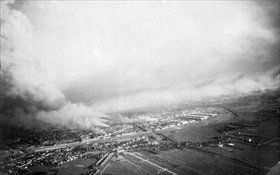 | 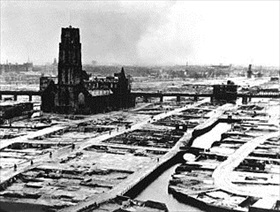 |
Left: Dense black and sulphur-yellow clouds rise into the misty sky above Rotterdam’s burning city center after the Luftwaffe rained down 158 500 lb and 1,150 100 lb high-explosive bombs—97 tons. (The Germans called such bombings Schrecklichkeit—frightfulness.) The massive conflagration was abetted by an exploding margarine factory that spewed burning oil over Rotterdam’s old-timber houses. Three months passed before the last embers of the fires died out. On the night of May 15/16, 1940, the RAF made its first raid on the interior of Germany, attacking civilian industrial targets in the Ruhr district (principally petroleum and steel-making facilities) that aided the German war effort.
![]()
Right: The heavily damaged Laurenskerk (St. Lawrence Church) and Rotterdam’s medieval city center after the removal of bomb debris. Around one square mile of the city was nearly leveled in less than an hour, and 24,978 homes, 24 churches, 2,320 stores, 775 warehouses, and 62 schools were destroyed. Left homeless were 80,000 people. An erroneous report stated that 25,000 residents had perished, a figure that shocked the world. After the war the Dutch lowered the death toll to 814. The German occupation of neutral Netherlands officially began on May 17, 1940, several days after Queen Wilhelmina, her family, and Dutch ministers had fled to London, there to establish a government in exile. Five years would pass before the Allies liberated the Netherlands, during which time over 300,000 Dutchmen died.
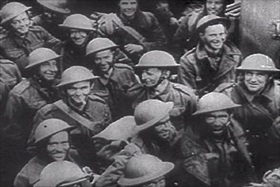 | 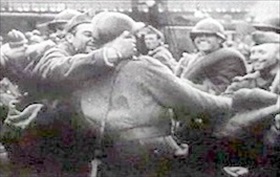 |
Left: Rescued British troops gathered on a ship at Dunkirk (Dunkerque), Northern France, where, according to Prime Minister Churchill, “the whole root, core, and brain of the British Army” was trapped. For every seven British and French soldiers who were rescued in what was named Operation Dynamo, one man was left behind as a prisoner of war, eventually ending up in Germany. Those below the rank of corporal worked as slave laborers in German industry and agriculture for the duration of the war.
![]()
Right: Dunkirk-rescued French troops disembarking at a port (likely Dover) on the south coast of England. Of the French soldiers evacuated from Dunkirk, only about 3,000 chose to continue the struggle against Nazi Germany, joining Charles de Gaulle’s Free French Forces (Forces françaises libres) in London. The rest were repatriated back to France, where about one half were redeployed against the Germans before the Franco-German armistice at Compiègne was signed on June 22, 1940, after which they were made POWs by the German Army. Nearly two million captured French soldiers were taken to Germany to work as forced laborers. Although some would eventually be released, most remained prisoners for the next four years.
Churchill’s Speech to the House of Commons, June 4, 1940: “We shall fight them on the beaches, . . . and we shall never surrender.” Photo Album and His Account of the “Miracle of Dunkirk”
![]()

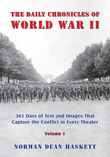 History buffs, there is good news! The Daily Chronicles of World War II is now available as an ebook for $4.99 on Amazon.com. Containing a year’s worth of dated entries from this website, the ebook brings the story of this tumultuous era to life in a compelling, authoritative, and succinct manner. Featuring inventive navigation aids, the ebook enables readers to instantly move forward or backward by month and date to different dated entries. Simple and elegant! Click
History buffs, there is good news! The Daily Chronicles of World War II is now available as an ebook for $4.99 on Amazon.com. Containing a year’s worth of dated entries from this website, the ebook brings the story of this tumultuous era to life in a compelling, authoritative, and succinct manner. Featuring inventive navigation aids, the ebook enables readers to instantly move forward or backward by month and date to different dated entries. Simple and elegant! Click 

